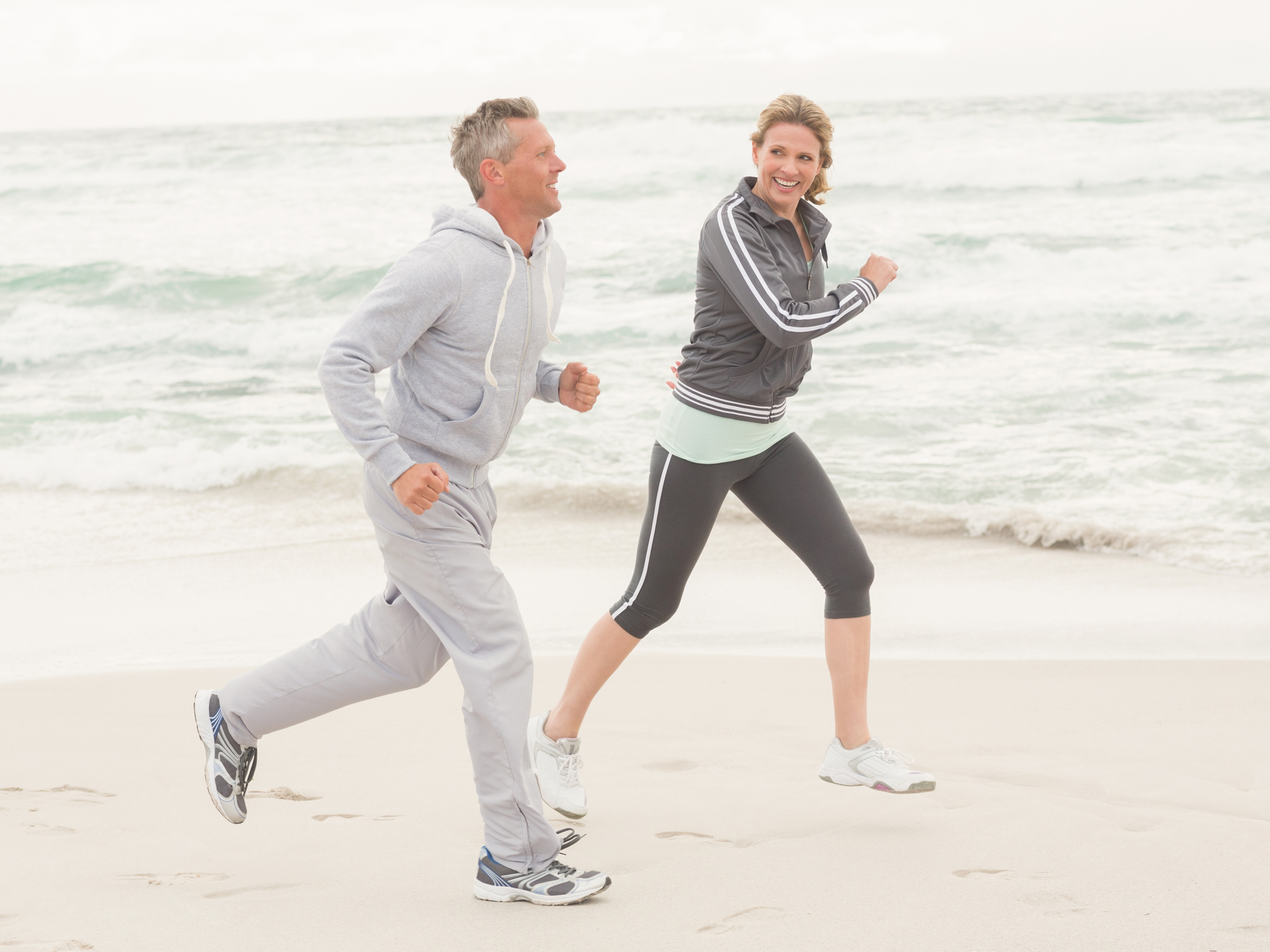Get Easy Health Digest™ in your inbox and don’t miss a thing when you subscribe today. Plus, get the free bonus report, Mother Nature’s Tips, Tricks and Remedies for Cholesterol, Blood Pressure & Blood Sugar as my way of saying welcome to the community!
They were wrong: Running IS good for your knees

There’s no denying that running is great for your cardiovascular health. Or that it whips you into shape quick. But what about its impact on your knee joints?
Conventional wisdom — and conventional medicine — has always said it’s not so great in that department. But it turns out, both conventional ways of thinking were wrong…
Despite all the anecdotal tales you’ve heard about lifelong runners pounding their knee joints into oblivion, the opposite is actually true — running can reduce inflammation in your joints and prevent joint problems like osteoarthritis.
Researchers from Brigham Young University demonstrated this fact in a recent study. They found that men and women between the ages of 18 and 35 didn’t experience an increase in knee joint inflammation after a 30-minute run. In fact, two markers for inflammation actually decreased after they ran.
So what does that mean for people who love to run?
Well, it means you should keep doing what you’re doing. Researchers also believe running could prevent the development of degenerative joint disorders like osteoarthritis.
“It flies in the face of intuition,” said study coauthor Matt Seeley, associate professor of exercise science at BYU. “This study does not indicate that distance runners are any more likely to get osteoarthritis than any other person. Instead, this study suggests exercise can be a type of medicine.”
Imagine that…
Exercise your way to better joints
Any form of exercise that’s worth your time and attention will help prevent knee pain, not cause it. And that includes running.
In fact, exercise improves joint pain and stiffness by keeping the muscles and tissues surrounding your joints strong. This supports your bones and reduces stress on your joints.
Unfortunately, a lot of people stop exercising when they start experiencing joint pain. They’re afraid exercise will make it worse, even though it will actually make it better.
So, instead of letting your joint pain dictate how much exercise you do, it’s time to let your exercise routine dictate how much joint pain you have. And if you exercise regularly you should have little to none.
But there’s one more helpful tip you should know about exercise and joint pain. Fitness expert Debra Atkinson says that if you’re experiencing joint pain, it’s not the painful joint that’s the root of the problem. It’s the joint above or below it.
If you’re having knee pain, for example, that means something’s not right with your hip or your ankle. In fact, Debra says knee pain is usually a result of weakness or poor mobility in your hip or ankle. Check out her advice and exercises for relieving knee pain.
And one last thing… if you’re looking for another simple way to improve your joint health, consider taking a gelatin supplement. Margaret Cantwell says it’s the best way to get pain-free joints and firmer skin.
Sources:
-
“Running actually lowers inflammation in knee joints.” MedicalXpress. http://medicalxpress.com. Retrieved January 6, 2017.
-
Robert D. Hyldahl, et al. “Running decreases knee intra-articular cytokine and cartilage oligomeric matrix concentrations: a pilot study.” European Journal of Applied Physiology, 2016.
-
“Exercise helps ease arthritis pain and stiffness.” The Mayo Clinic. http://www.mayoclinic.org. Retrieved January 6, 2017.












